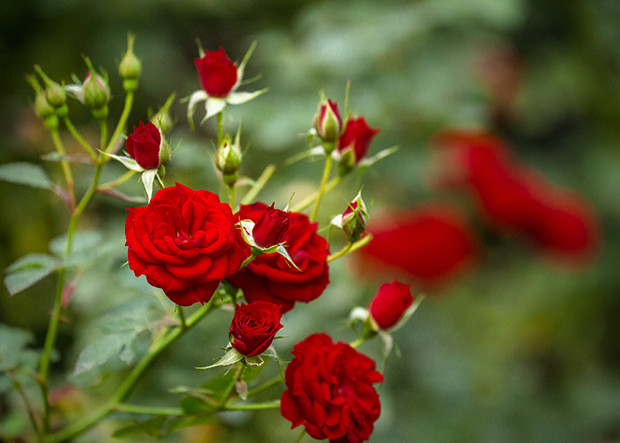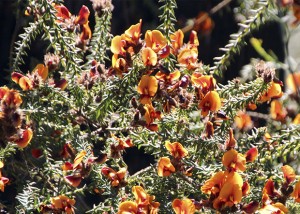Get a jump start on Spring! Maintenance for Roses.
In many parts of the country, February means spring is just around the corner if not already at your doorstep. For many of us, mild winters mean we can keep planting and preening our gardens year-round. Cool-season color can be planted, as well as a bevy of perennials, shrubs and trees. Cool season edibles are still going strong.Roses need to be pruned before they begin sprouting new growth in late-winter or early spring, depending on your climate. Now is a great time to get seeds of warm season edibles started indoors so they are at the ready to go into the garden when temperatures warm.
If the warm season is still a ways off in your part of the country, there are still things you can do to get a jump on spring.
Stay freeze-ready. Even regions with mild winters can experience intermittent cold snaps. Be sure you’re ready for occasional freezes by keeping frost cloth on hand to protect young transplants, marginally hardy plants, or plants with new flower buds on them.
Prep Soil. February is a good time to prepare and amend soils prior to spring planting. Soil conditioners such as organic compost, worm castings and liquid seaweed. These amendments will feed and boost the population of soil microbes in your soil to help you grow healthier plants. If you grow edibles in raised beds, refresh the soil with organic compost between harvests.
Plant and Prune roses before it gets warm. Now is a great time to get new rose plants in the ground. It’s also time to prune and feed them. Roses need to be pruned before they begin sprouting new growth in late-winter or early spring, depending on your climate. When pruning roses, be sure to use invest in a quality bypass pruners so you make clean cuts. Hybrid tea type roses can be pruned back up to 50% of their existing growth. Antique, shrub roses and many floribundas require less pruning to look their best. Clean away all yellow leaves or leaves that have black spot and remove from the landscape bed.
Prune fruit trees. For areas with an early spring, February is often the time when you’ll need to prune your fruit trees, just before bud break. The goal is to prune your fruit trees after the coldest part of winter has passed, but before they start to bloom. Mid-February is a good target, but in warm climates that could be the beginning of the month. Remove crossing branches and branches in the center of the tree that allow better air circulation and light allowance.
Plant perennials, hardy succulents, shrubs, groundcovers and trees throughout the month. In areas where soils don’t freeze, you can keep planting through the winter. February is a great time to add new foundation shrubs, trees and accent perennials before warm temperatures return.
Irrigation check-up. If you use an automated sprinkler system, now is a good time to have it checked for leaks, pressure irregularities or other repairs before you need to start using the system in the warmer season.
Replace damaged lawns with groundcover. If you have an area where grass won’t grow or are looking to reduce your water usage, evergreen groundcovers are a good alternative. Shrubs such as Juniperus tamariscifolia and Juniperus x pfitzeriana ‘Old Gold’ make excellent low-maintenance groundcovers. Or, plant a blooming, evergreen perennial such as Teucrium chamaedrys ‘Prostratum’.


